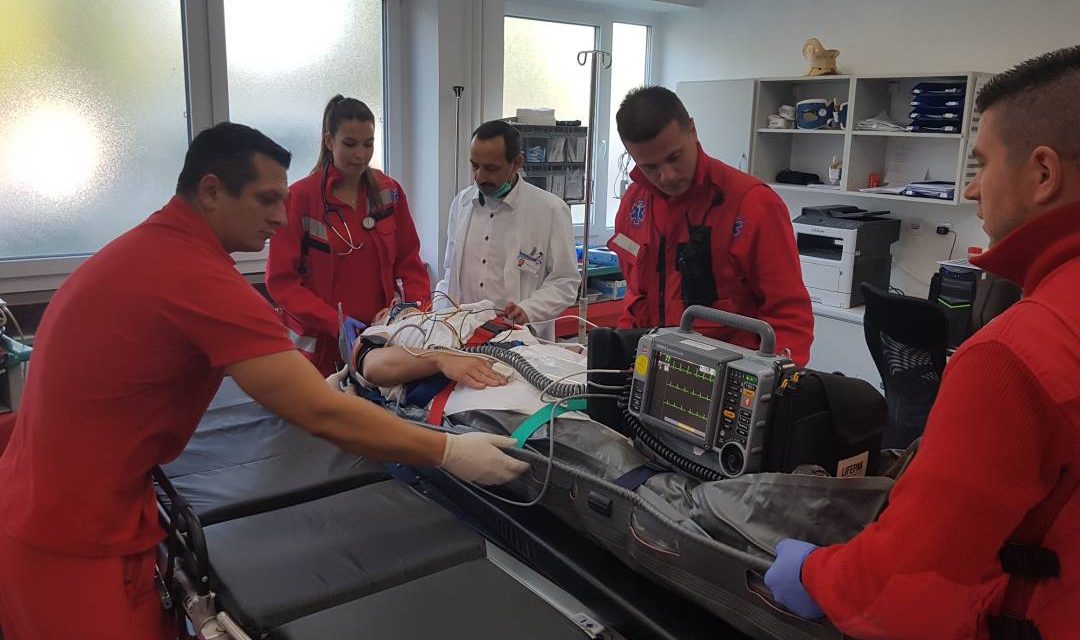When considering the risk associated with Rapid Sequence Intubation (RSI), several factors should be evaluated before proceeding with this airway management technique. RSI is a high-risk procedure that carries potential dangers and complications, so a thorough risk assessment is essential. Here are the key factors to evaluate:
- Full stomach:
- Determine if the patient has recently eaten a meal. The RSI procedure is usually recommended when the patient’s stomach is full, which increases the risk of aspiration (breathing the contents of the stomach into the lungs).
- Airway patency:
- Assess the ability to ensure and maintain the patency of the patient’s airways. In cases where there is a risk of airway obstruction, RSI may be required to ensure a clear airway.
- Probability of patient survival:
- To estimate the probability that the patient will survive the procedure when RSI is performed. This includes considering the patient’s general condition and the severity of their illness or injury.
- Unprotected and unsecured airway:
- Determine if the patient’s airway is at risk of becoming blocked during the procedure.
- Impossibility of maintaining airway patency:
- Assess whether the patient is unable to maintain an open and unobstructed airway on his own.
- Oxygenation and ventilation:
- Assess whether the patient is sufficiently supplied with oxygen and ventilated. RSI may be considered if the patient’s respiratory status is compromised
- Hypoxemia, hypoventilation, hyperventilation:
- Assess for abnormal oxygen levels, hypoventilation, or hyperventilation.
- Thermal injuries and burns of the respiratory tract:
- Check for signs of thermal injury or burns to the airways, which may require RSI.
- Disturbance of consciousness:
- Assess the patient’s level of consciousness. RSI may be indicated if the patient has impaired consciousness or a reduced level of consciousness.
- Multiple injuries:
- Consider whether the patient has suffered multiple injuries that require airway management, especially in cases of severe trauma.
- Neck penetration and airway injuries:
- Determine if there are penetrating injuries to the neck or airway, which may require rapid airway control.
- Unstable chest:
- Determine if the patient has an unstable chest, which can affect their ability to breathe effectively.
- Current severe respiratory disorders:
- Assess whether the patient is exposed to severe, life-threatening airway problems that require prompt intervention.
- Patients with compromised breathing who are not in apnea:
- Consider patients with compromised respiratory function who are not apneic, such as those with extensive pneumonia, pulmonary edema, or status epilepticus.
These factors should be carefully reviewed by the medical team when deciding whether to continue with RSI. The decision to perform RSI should be based on a comprehensive assessment of the patient’s condition and the potential risks associated with the procedure. Patient safety is of utmost importance in these situations, and the procedure should be performed only when necessary and with appropriate professional knowledge.
Rapid sequence intubation (RSI) is an airway management technique that can have very serious consequences for the patient. Therefore, it is essential to carry out a risk assessment to assess possible difficulties in managing the airway and the ventilation mask.
Risk assessment includes an examination of the patient’s head, neck, nose, throat and chest. Difficulties during intubation can be expected in the following cases:
- Patients with facial hair or facial features that make intubation difficult.
- Patients with short and thick necks.
- Patients with obesity.
- Patients with facial or neck injuries.
- Patients with immobilization of the cervical spine.
- Patients with damaged teeth, genetic anomalies or deformities.
- Epiglottitis.
- Burns of the respiratory tract.
- Patients with a narrow face.
- Patients who had thyroid surgery.
- The presence of airway obstruction.
During the external examination of the patient, certain measurements should be taken to anticipate potential difficulties during intubation. These measurements include:
- Mouth width (measured by the 3-3-2 technique): The mouth should be wide enough to accommodate the width of three fingers, the distance from the chin to the hyoid bone should be at least three fingers, and the space between the thyroid cartilage and the hyoid bone should be two fingers . If these dimensions are less than the stated measurements, intubation is likely to be difficult (rule 3-3-2).
The Mallampati classification estimates the size of the tongue compared to the size of the pharynx. The classification is as follows:
- Class I: Visible soft palate, uvula and tonsillar pillars.
- Class II: Visible soft palate and uvula.
- Class III: Only the soft palate is visible.
- Class IV: The soft palate is not visible.
This classification can be different if the patient is in a sitting or lying position, and talking during the examination can falsely improve the appearance.
In cases where a cervical spine injury is suspected and the patient is immobilized with a cervical collar or a total spinal immobilization device, difficulties with intubation should be expected. Intubation of such patients usually requires tilting the neck to an angle of 35 degrees or more.
If intubation is not possible, pressure on the cricoid cartilage or the BURP (Backward-Upward-Rightward Pressure) maneuver can be applied to improve visualization during intubation, especially if the cervical collar is not removed or at least loosened. Applying the Sellick maneuver or BURP can result in mobilization of an unstable segment of the spine.
Airway obstruction caused by tumors, injuries, foreign bodies, or burns can make advanced airway management by intubation difficult or impossible.
The decision to continue advanced airway management techniques, such as intubation, should be based on the patient’s examination and assessment of the risk of potential intubation failure or difficulties with mask ventilation and the use of a self-delivering balloon.



0 Comments